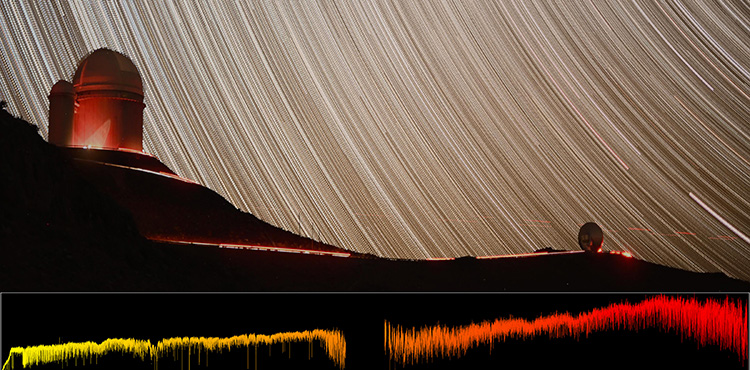An international team of scientists, including UNIGE astronomers,
publishes the first results from the new NIRPS near-infrared spectrograph.

An international team led by the Universities of Geneva (UNIGE) and Montreal published the first results today from the NIRPS spectrograph installed on the European Southern Observatory's (ESO) 3.6-meter telescope in La Silla, Chile. This new instrument, which operates in the near infrared, offers exceptional performance in detecting and characterising exoplanets, particularly around red dwarfs. By combining NIRPS with the HARPS spectrograph, which operates in visible light, astronomers have access to unrivalled spectral coverage for studying exoplanets. The first five scientific papers can be found in the journal Astronomy & Astrophysics.
The Near-InfraRed Planet Searcher (NIRPS) is a high-resolution spectrograph designed to search for and study exoplanets around stars smaller and cooler than our Sun. Located on the 3.6-meter telescope at La Silla Observatory in Chile, NIRPS officially began scientific observations in April 2023. Its development and construction are the result of a large consortium of scientists and engineers from Canada, Switzerland, Spain, Portugal, France, and Brazil, with the support of the European Southern Observatory (ESO). More than 140 experts contributed to the project, including a large team from the Astronomy Department of the UNIGE Faculty of Science and the National Research Centre PlanetS.
NIRPS is specially designed to observe in the near-infrared wavelengths. Next to it is the HARPS spectrograph, also designed by Swiss scientists, which has been hunting for exoplanets in visible light since 2003.
"This new instrument is the result of technological innovations and the fruit of an international collaboration," says François Bouchy, Associate Professor at the Department of Astronomy, co-leader of the NIRPS project and lead author of the paper describing the instrument's performance and scientific objectives. "We are proud of the unique and unrivalled performance of NIRPS and excited by the first scientific results."
The combination of HARPS and NIRPS offers unique spectral coverage for studying and searching for exoplanets.
The combination of HARPS and NIRPS offers outstanding spectral coverage for studying and searching for exoplanets. The unique performance of the HARPS+NIRPS tandem makes it one of ESO's most requested astronomical instruments of the past semester. In parallel with this first-light paper, which accompanies the commissioning and science validation of the brand-new instrument, the consortium is publishing four papers in the journal A&A with the first astrophysical results from NIRPS observations.
Scrutinising the atmosphere of exoplanets
The precision of NIRPS in the near-infrared and the possibility of combining it with HARPS in the visible make it possible to study the atmospheres of planets as they pass in front of their star. For their first observations, the astronomers examined the atmospheres of two well-known gas giant exoplanets: WASP-189 b and WASP-69 b.
The former has one of the most extreme atmospheres, so extreme that evaporated iron can be detected. However, it is only detected in the visible with HARPS and not in the near infrared with NIRPS. ''Iron also exhibits spectral signatures in the near infrared. So we should be able to detect it with NIRPS too!'' explains Valentina Vaulato, PhD student at the Department of Astronomy and first author of the study conducted on WASP-189 b. ''Hence there must be another chemical element hiding the iron signature in the near infrared but not in the visible. The hydride anion – a hydrogen atom with two electrons instead of one – is our prime suspect,'' concludes the researcher.
NIRPS observations of the second exoplanet, WASP-69 b, reveal a long tail of helium gas escaping from its comet-like atmosphere. This observation, one of the most detailed of its kind, sheds new light on the evolution of planetary atmospheres under the effect of intense radiation from the host star.
Detecting exoplanets in the infrared
NIRPS' prime targets are the cool red stars known as M dwarfs, by far the most common stars in the galaxy, as they shine more brightly in the near-infrared than in the visible. In its first months of operation, scientists from the NIRPS consortium were able to confirm with unprecedented accuracy the presence of Proxima Centauri b, an Earth-like planet located in the habitable zone of the red dwarf Proxima Centauri, the closest star to our solar system. The team also found evidence of a second, less massive planet orbiting this star.
NIRPS is also the only near-infrared instrument to observe our Sun every day, to better understand stellar activity and how to limit its impact on the characterisation of exoplanet atmospheres and the detection of Earth-like exoplanets.






